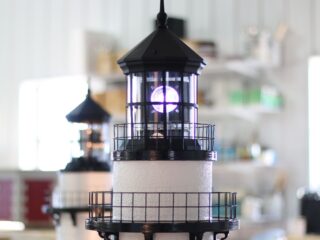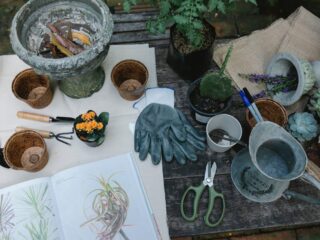
Tired of your patio looking like a hodgepodge of mismatched pots? Planter boxes might just be the secret weapon you’ve been missing. These versatile containers corral your potted plants into neat, defined spaces and offer endless possibilities for creating a cohesive, eye-catching arrangement. Whether you’re blessed with a sprawling garden or a cozy balcony, planter boxes are your ticket to transforming any outdoor area into a haven of beauty and tranquility.
But arranging them isn’t always a walk in the park. There’s so much to consider achieving that elusive “wow” factor. That’s where this guide comes in. It’ll walk you through the ins and outs of selecting the perfect planter boxes that’ll make your neighbors green with envy (in a good way, of course!). Read on.
Choose the Right Planter Boxes
The right planter boxes can transform your garden from ordinary to extraordinary. To simplify your decision-making process, consider these key factors:
Size
Ensure the box provides enough space for the roots to grow and spread out. Overcrowded roots can hinder plant growth and lead to unhealthy plants
Material
Planter boxes come in a variety of materials, each with its own advantages and disadvantages.
- Terracotta and clay are classic choices that offer excellent breathability for roots. However, they can be heavy and prone to cracking in freezing temperatures.
- Wood is another popular option; however, it requires regular maintenance and can rot over time if not properly treated.
- Metal boxes, such as those made of galvanized steel or aluminum, are durable and modern-looking. However, they can heat up quickly in the sun, potentially damaging the roots of your plants.
- Plastic and resin boxes are lightweight, affordable, and available in a wide range of colors and styles. However, they may not be as durable as other materials and can fade over time with exposure to sunlight.
- Consider visiting a reputable source like www.flowerwindowboxes.com or a similar one for expert advice and a curated selection of high-quality planter boxes.
Drainage
Your planter boxes should have adequate drainage holes to prevent waterlogging. If your chosen box doesn’t have them, you can easily drill them yourself.
Style
If you have a modern home, opt for sleek and minimalist designs. For a traditional home, classic terracotta or wooden boxes may be more suitable. Consider the color, shape, and texture of the box to ensure it blends seamlessly with your existing décor.

By carefully considering these factors, you can choose planter boxes that meet the needs of your plants and enhance the beauty of your garden
Plan Your Layout
Thoughtful planning can maximize the use of your available space. Here are some key considerations for planning your garden layout:
Sunlight
Different plants have varying sunlight requirements. Map out the sunny and shady areas of your garden and choose plants accordingly.
Accessibility
Plan your layout so that you can easily access all areas of your garden for maintenance tasks such as watering, weeding, and pruning. Leave enough space between plants and create pathways for easy navigation.
Plant combinations
Tall plants should be placed at the back of the garden or in the center of a raised bed, while shorter plants can be placed in the front or along the edges. You can also create visual interest by combining plants with different textures, colors, and foliage shapes.
Functionality
If you plan to use your garden for specific purposes, such as entertaining, dining, or relaxing, incorporate features that cater to those needs.
With a little creativity and forethought, you can transform any space into a personal paradise.
Select Plants for Your Planter Boxes
The plants you choose for your planter boxes will determine the overall look, feel, and functionality of your garden. With a vast array of options available, it’s essential to select plants that are well-suited to your specific environment and needs.
Here are some examples of plants you can consider:
Herbs
Basil, rosemary, thyme, mint, parsley, and chives are all excellent choices for planter boxes.
Vegetables
Cherry tomatoes, peppers, lettuce, radishes, and dwarf varieties of beans and peas can all be grown successfully in planter boxes.
Flowers
Petunias, marigolds, geraniums, pansies, and zinnias are popular choices for adding color and vibrancy to planter boxes.
Foliage plants
Hostas, ferns, coleus, and ornamental grasses can add texture and interest to planter boxes. They’re often low-maintenance and can provide year-round greenery.
By carefully selecting the right plants for your planter boxes, you can create a beautiful, productive, and enjoyable garden that brings you joy throughout the year.
Arrange Planter Boxes for Maximum Impact
Plant arrangement can significantly impact the overall aesthetics and functionality of your garden. Consider these tips for arranging your planter boxes for maximum impact:
Create levels
Use different heights and sizes of planter boxes to create visual interest and depth. Elevate some boxes on plant stands, shelves, or walls to draw the eye upwards.
Groupings
Arrange them in clusters or groupings to create a sense of cohesion and visual impact.

This works particularly well with plants that have similar colors, textures, or growth habits.
Symmetry
For a formal look, arrange planter boxes symmetrically on either side of a pathway or entrance. This creates a balanced and orderly appearance.
Asymmetry
For a more casual and natural look, arrange planter boxes asymmetrically. This can add a sense of dynamism and movement to your garden.
Focal points
Use larger or more decorative planter boxes as focal points in your garden. Place them in strategic locations to draw the eye and anchor the space.
By experimenting with different arrangements, you can find a layout that maximizes the visual appeal of your planter boxes and creates a harmonious and inviting garden space.
Final Thoughts
Your planter box garden is a canvas, ready for you to create a masterpiece. With careful planning and the right choices, it can become a vibrant oasis that brings you joy and satisfaction. So, gather your tools, let your creativity bloom, and embark on this exciting journey of transforming your space into a flourishing garden sanctuary.



